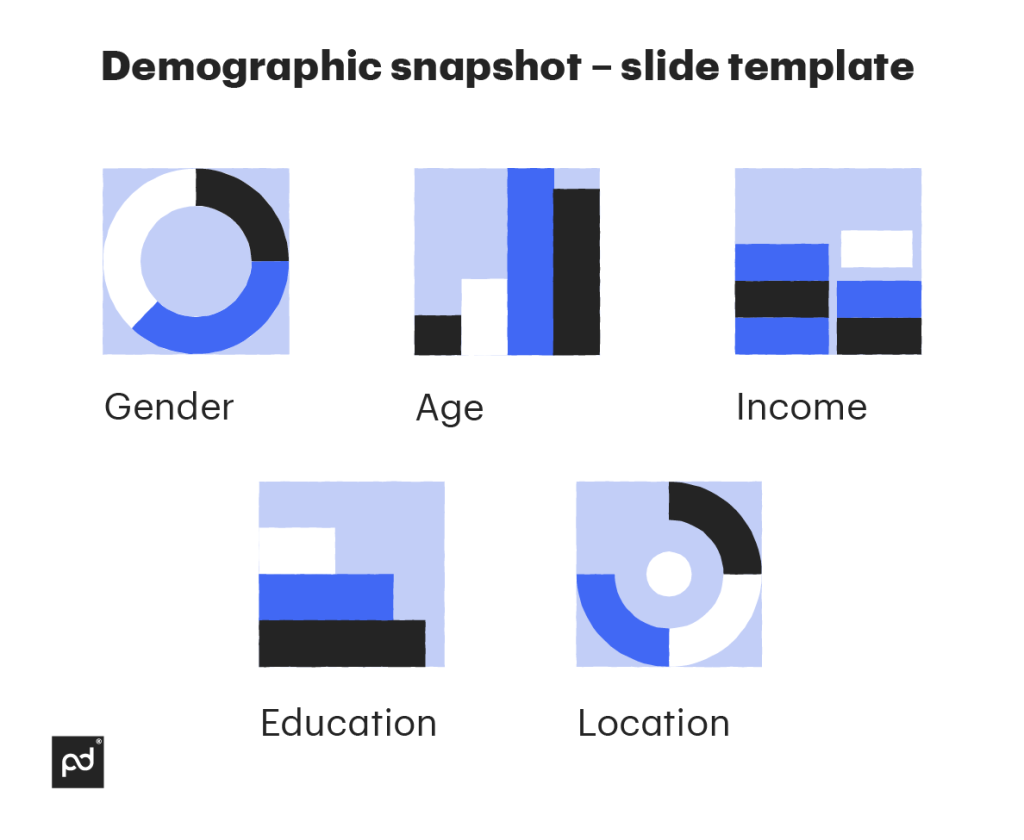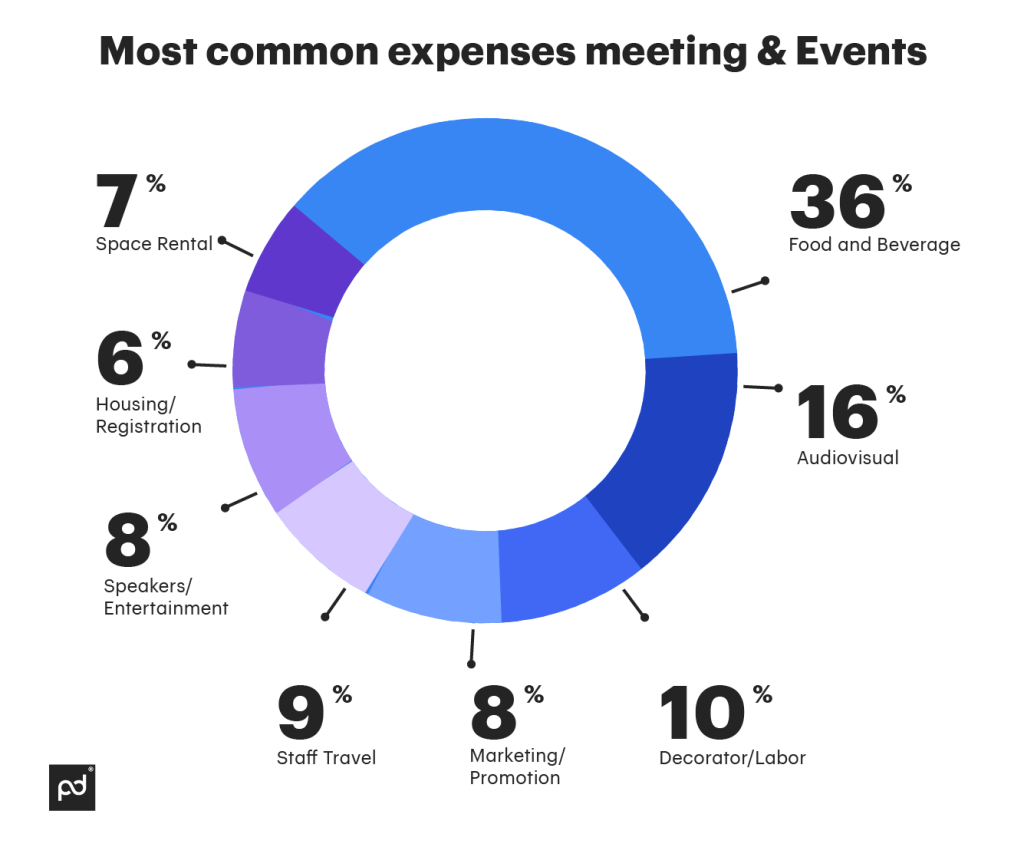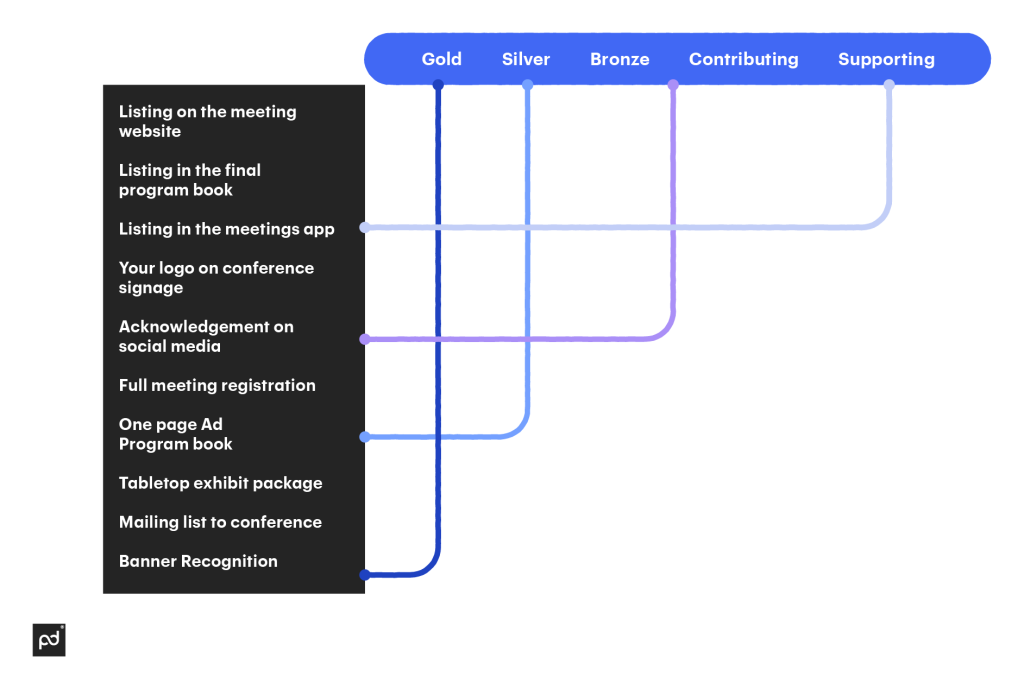Imagine you are arranging an international conference dedicated to the blockchain, with hundreds of guests and numerous speakers.
One of your key responsibilities as an event planner is to secure sponsorships to meet the budget and make the event remarkable.
You might have already set your sights on companies and individuals who can come forward as sponsors.
But how do you sign mutually beneficial partnership agreements with them?
You need a sponsorship proposal that has a professional look and feel — and you can create such a document using the simple sponsorship proposal template in PandaDoc (alongside 2,800 users who have already done so).
In this guide, you’ll discover the basics of sponsorship and elements your proposal should include to attract funding.
Read on!
What is a sponsorship proposal?
An event sponsorship proposal is a pitch or a presentation you create to persuade businesses or individual investors to support your event financially or through in-kind contributions.
For example, a blockchain conference might require sponsors who can contribute in non-financial ways by providing a venue, transportation, equipment, and so forth.
To get either monetary or non-cash support (or both), you should create and share a strategic document with a potential sponsor that outlines how they can benefit from sponsoring your event.
Your proposal should dive into the nitty-gritty of the event, anticipated turnout, and opportunities for exposure that the event offers.
Knowing how to create a professional event proposal will raise your chances to engage sponsors in creating an amazing event together.
Preparing and writing your sponsorship proposal
Let’s navigate the process step by step, from tips for preparing to write a sponsorship proposal through adding the final touches to your template-based document.
You may be tempted to write a description for your upcoming event and send sponsorship requests to a large email list, hoping something sticks.
Not so fast. Generic outreach hardly ever yields results.
Instead, delve deep into a potential sponsor’s type of business and values.
You should align a partnership opportunity with a particular brand identity, market goals, and audience engagement strategies.
This is your chance to showcase your professional approach and demonstrate how your event can serve as an ideal platform for sponsors to amplify their message.
1. Screen your target audience
If you have previously arranged a similar event, you probably know your preferred audience well and have an attendee profile. If that’s not the case, start from scratch.
Create an image of your ideal attendee before writing a sponsorship proposal.
Look at your target audience and ask yourself: Who would find the event’s topic interesting? Who would be attracted by confirmed celebrities? Who could realistically attend the event?
Rely on real-life data and evidence rather than assumptions.
You can monitor early registrants on Facebook, LinkedIn, and Twitter; run a survey among registrants; visit similar events in person and talk to guests; and check if there is an event with a similar audience taking place on the same day in the same city.
Build an event attendee profile.
Create a comprehensive attendee profile, taking into account key information such as:
- Age
- Gender
- Occupation
- Marital and parental status
- Income level
- Education level
- Geographic location
- Ethnic background
- Religious beliefs
- Hobbies
- Technical knowledge
Your blockchain event could attract digital marketers, software developers, investors, and more. Each will represent a separate profile.
In this case, you’ll need to create several different profiles for your target audience and tailor your proposals to focus on the segment a particular sponsor will be most interested in.
Tools such as Google Analytics and Facebook Insights will help you uncover insights about your target audience — and sometimes the audience of your partners and competitors.
Use this data to take a deeper look at your website visitors and subscribers on social platforms.
2. Identify potential sponsors’ needs
The attendee profile you created in the previous step will guide you as you select target sponsors.
We suggest doing so in the following order:
- Check out your potential guests’ profiles on social media. Browse who guests follow or subscribe to, and make a list of companies you find. Names that pop up twice in your list should make up the core of your potential sponsors.
- Look at similar companies to those on this initial list and add as many as you can.
- Screen your candidates.
Next, read your potential sponsors’ blogs and social media publications.
Then refine the ideas you’ve encountered to create tailored proposals for each company.
For instance, if a company has just presented a new product, they might still have a budget to promote it.
Should your event provide such a promotion opportunity, hit them with it right between the eyes in your sponsorship proposal.
Your best shots are companies that:
- Have sponsored similar events in the past
- Have seen recent changes in their management
- Are affected by major current events in their sector
- Have just launched or are launching a new product or campaign
- Have brand values that correspond to your event
3. Connect the dots
You may see clearly how your event’s audience relates to a potential sponsor’s business, but you need to expand on this relationship, making the benefits of sponsoring your event obvious.
You can include the following selling points:
- Enhance brand awareness: Offer to place the sponsor’s logo on event marketing materials (banners, social media posts, email campaigns, and more) and get the brand mentioned in media coverage.
- Drive sales: Organize a dedicated space at the event where sponsors can showcase their products or services.
- Bolster the brand image: Connect a sponsor with a part of the event that highlights their values (for example, a keynote on blockchain innovation).
- Promote a product: This can be done during a featured session dedicated to the launch of a sponsor’s latest blockchain product.
Although you might be unaware of a company’s immediate priorities, you can give your prospective sponsor some food for thought.
4. Think through sponsorship opportunities
Once you know which goals you can help a potential sponsor achieve through your event, think of the perks you can offer.
Of course, they will depend on your event’s specifics, but here are a few ideas from Eventbrite, Billetto, and our experience for starters:
- Provide free Wi-Fi for guests and show a sponsor’s branding on a splash page when attendees connect to it.
- Feature a sponsor’s logo on the event website and on physical promotions.
- Feature a sponsor on your website with a banner ad.
- Offer sponsors a space on your Facebook or X cover photo.
- Include an ad feature for a sponsor in pre- and post-event publications.
- Include sponsor information in the event’s mailout.
- Let a sponsor put up a roll-up, information stand, or trade booth in the event venue.
- Distribute a sponsor’s materials among guests.
- Get a sponsor’s representative to speak at the event.
- Brand a device charging station after a sponsor.
- Set up a branded game lounge where attendees can relax over games, or arrange other sponsor-themed areas.
- Arrange a live stream from the event featuring a sponsor’s branding, pre-rolls, and “bumper” videos before the event content starts.
- Distribute sponsored merchandise like pens, swag bags, lanyards, and water bottles.
- Place sponsor branding on staff uniforms.
- Cover the floor, venue entrance, or other objects with branded vinyl wraps.
- Set up an interactive wall featuring a sponsor’s branding.
- Offer a catering menu branded by a sponsor.
How to write a sponsorship proposal using a template
You have an attendee profile, a list of potential event sponsors, and a variety of sponsorship options.
Now is the time to arrange all that data in a proposal.
The good news is that you don’t need to write the document from scratch.
PandaDoc has sponsorship proposal templates you can work from, store, and update for your next events.
Let’s look at how to use a template and suggest a few bonus sections.
1. Customize the cover page
The cover page should provide general details: the name of the decision-maker you’re addressing your proposal to as well as their company’s name, your name and the name of your company, the type of event you’re arranging, and the event’s logo and title.
Most importantly, the cover should feature a title.
If you want to differentiate yourself from other proposals, avoid generic titles like “Sponsorship proposal for ABCD Event.”
Try to develop something more engaging: a call to action that immediately relates to the sponsor’s business:
- Present your new wallpaper to the Designer Crowd offline
- Be seen by construction managers at ABCD Event
- Climate change: Show that you care at ABCD Event
You get the idea. However, make sure you add “event sponsorship proposal” somewhere on the page, making it easy to spot.
This will help the person responsible for sorting incoming mail put your document in the right box.
→DOWNLOAD NOW: FREE SPONSORSHIP PROPOSAL TEMPLATE
2. Introduce yourself and your event
Consider the first page of your proposal as a sponsorship letter, and write it accordingly.
If you know the recipient’s name, address them directly and write as if you were sitting and talking to them.
As you proceed, include these details:
- Event name
- Date and time
- Keynote speakers and entertainers
- Catering and suppliers
- Venue and location
- What makes your event special (Why will it be attractive to the sponsor’s target audience?)
- Confirmed sponsors
In the body of your sponsorship letter, emphasize how your event relates to the client’s business.
Use phrases such as “according to our survey, 20% of our attendees are your clients.”
Remember that social proof works better than any arguments you might come up with yourself.
If you have past events in your portfolio, provide testimonials from guests and participants.
Finally, use your sponsorship letter to build trust. List the key people behind the event alongside their photos, brief biographies, and accolades.
This will show the recipient you’re transparent — and real.
People prefer working with people, not organizations.
3. Break down your event’s demographics
You’ve already created a detailed attendee profile.
Now it’s time to present that data in a digestible way, highlighting how the potential sponsor’s business relates to your audience.
Consider putting together an infographic featuring the most important details — like the one below.

4. Present all data and metrics
If you have held a similar event in a previous year, it’s now time to use stats collected from the last event.
If you don’t have such information, you may have intelligence from other organizers or general stats that might work as a selling point.
Think about the following data:
- Gross revenue from promotions
- The number of people who checked in for and attended similar events
- The number of active community members you have
- Your visit-to-purchase conversion rate
- The number of attendees engaged with similar events online
- The number of people you can reach out to online and offline if you secure essential funding
These examples should inspire you to develop your own KPIs based on your event’s specifics.
5. Clarify your “why”
You’ve probably chosen a specific potential sponsor because their values resonate with your event’s mission.
But they may not realize as much until you lay the relationship out in black and white.
Use this section in the template to tell the recipient about your event’s objectives.
Make sure those objectives go hand in hand with the sponsor’s philosophy (or at least what the sponsor describes it to be).
6. Make your proposal financially transparent
A prospective sponsor will be wondering what you need their money for. Be sure not to leave them any chance to cut you loose here.
Present your spending plan in a pie chart.
List costs like venue rent, marketing, entertainment, guest housing, catering, staff, gifts, and everything else that is required for your event.

7. Provide a clear timeline
Your sponsor will want to make sure you’re committed to the event.
You can prove commitment by presenting the event planning timeline in your proposal.
Here’s a general idea of what your timeline may look like:

Draw on this example to develop your own detailed timeline.
8. Define and describe sponsorship packages
You’ve previously put together your sponsorship options. For the proposal, split the list of options into several packages varying in value.
The more valuable the package is, the higher the sponsorship level and the more expensive it should be. Check out this example:

If you’re sending your proposal online, you can use the benefits of the interactive Sponsorship Agreement Template provided by PandaDoc.
For instance, you can allow the recipient to choose a sponsorship package and the sponsorship amount will appear in the terms and conditions below.
Finalize your proposal
Think of this stage as the grand finale: instead of sending follow-up emails later, make sure you have everything laid out accurately on the last page of your sponsorship proposal.
Wrap up your proposal with terms and conditions, which are essential to creating a clear understanding and agreement between you and the sponsor.
Sometimes, companies create a separate document called a sponsorship agreement.
But a comprehensive template already has its last page dedicated to this specific purpose to reduce follow-up mail.
On this page, you should include the following details:
- Event name
- Sponsor company’s name
- Sponsor company’s address
- Your company’s name
- Event date
- Amount of the contribution
- Date by which the contribution is to be provided
- Sponsorship termination date
- Changes and cancellation terms
The page should end with a standard signature box and your contact information, such as your phone number and email.
If you’re using the PandaDoc template, you’ve already provided most of those details and they will appear in the respective fields automatically.
Moreover, you can use a convenient electronic signature feature to speed up sponsorship deals.
Craft a winning event sponsorship proposal with PandaDoc
Before you dash off an email to a potential sponsor of your event, make sure your sponsorship proposal is tailored to the business’s values and offers lucrative brand exposure opportunities.
You can use the intuitive and customizable PandaDoc event sponsorship proposal template to keep your proposal informative and polished.
You can also use document tracking software to see who interacts with a proposal and when, what changes they make, and how a particular proposal performs.
Sign up for a free trial today and discover how PandaDoc (and its templates) can make planning your event a breeze.
Disclaimer
PandaDoc is not a law firm, or a substitute for an attorney or law firm. This page is not intended to and does not provide legal advice. Should you have legal questions on the validity of e-signatures or digital signatures and the enforceability thereof, please consult with an attorney or law firm. Use of PandaDocs services are governed by our Terms of Use and Privacy Policy.
Originally published September 14, 2022, updated September 12, 2024


